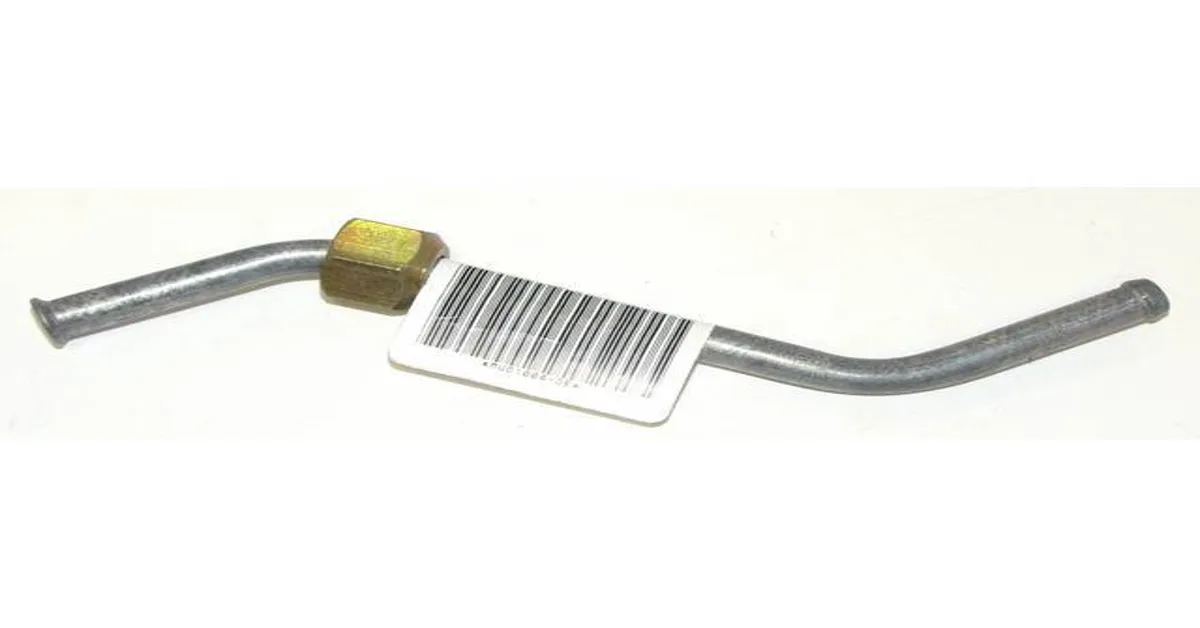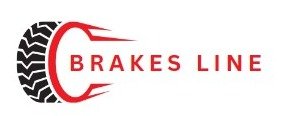As you’re driving down the highway, you suddenly hear a loud hissing noise coming from your car’s engine. You pull over and pop the hood, only to find that your brake vacuum line has cracked and is leaking air. This may seem like a minor issue, but it can greatly affect the performance of your brakes and put you at risk on the road.
That’s why it’s important to know how to properly replace your brake vacuum line, and in this blog post, we’ll guide you through the process step by step. So buckle up and get ready to learn how to keep your brakes in top condition.
Key Takeaway
- Regular maintenance of your brake vacuum line is crucial for safe driving.
- If you hear a hissing noise and notice a cracked brake vacuum line, it needs to be replaced immediately.
- Replacing the brake vacuum line is a simple process that can be done at home.
- The process involves identifying the location of the vacuum line, removing the old line, and installing the new one.
- Make sure to use the correct type and size of vacuum line for your specific vehicle.
What is a Brake Vacuum Line?

The brake vacuum line is a crucial component in your vehicle’s braking system. It plays a vital role in creating the necessary vacuum pressure for your brakes to function properly. Over time, this line can become worn or damaged, resulting in decreased brake performance and potentially dangerous situations on the road.
To ensure the safety of yourself and others, it’s important to replace the brake vacuum line when needed. This process involves removing the old line and installing a new one, which can be done by a professional mechanic or by yourself if you have the necessary tools and knowledge. When replacing the brake vacuum line, it’s important to choose a high-quality replacement part that is compatible with your vehicle.
It’s also crucial to follow proper installation procedures to ensure the line is properly connected and sealed. If you notice any signs of a faulty brake vacuum line, such as decreased brake responsiveness or a hissing sound when applying the brakes, it’s important to address the issue immediately. Neglecting a faulty brake vacuum line can lead to more serious and costly repairs down the road.
The brake vacuum line is a vital component in your vehicle’s braking system. Regular maintenance and prompt replacement when needed can ensure your brakes are functioning properly and keep you safe on the road. Don’t wait until it’s too late – keep an eye out for any signs of a faulty brake vacuum line and take action to replace it as soon as possible.

Signs that Your Brake Vacuum Line Needs Replacement
If you’re experiencing a soft brake pedal or difficulty stopping your vehicle, it may be time to replace your brake vacuum line. This crucial component helps create the necessary vacuum pressure for your brakes to function properly. Over time, the rubber hose can deteriorate, leading to leaks and loss of vacuum pressure.
Don’t let a faulty brake vacuum line compromise your safety on the road. In this blog, we’ll discuss why it’s important to replace your brake vacuum line and provide a step-by-step guide on how to do it yourself. So buckle up and let’s get started!
You May Also Like: Boost Your Car’s Performance: The Ultimate Guide to Cleaning Brake Lines
Importance of Replacing Your Brake Vacuum Line
Brake vacuum lines play an essential role in the functioning of your vehicle’s braking system. Without them, your brakes would not be able to work effectively, putting you and other drivers at risk. Over time, these vacuum lines can become worn or damaged, causing them to leak or fail.
When this happens, it is crucial to replace them promptly to ensure your safety on the road. The process of replacing brake vacuum lines may seem daunting, but it is a relatively straightforward task that can be done at home with the right tools and knowledge. First, you will need to locate the vacuum lines, which are typically made of rubber and connect the brake booster to the engine’s intake manifold.
They may also be connected to the throttle body or carburetor, depending on your vehicle’s make and model. Once you have located the vacuum lines, you will need to remove the old ones carefully. This can be done by loosening the clamps or connectors that hold the lines in place.
Be sure to inspect the lines for any signs of wear or damage, such as cracks or holes. If you notice any, it is best to replace the entire line rather than trying to patch it. Next, you will need to measure the length of the old line and cut a new one to the same size.
It is essential to use a vacuum line that is the same diameter as the old one to ensure a proper fit. Once you have the new line cut, you can then connect it to the brake booster and intake manifold using new clamps or connectors. It is crucial to make sure all connections are secure and tight to prevent any leaks.
Once everything is in place, you can then test your brakes to ensure they are working correctly. If you notice any issues, double-check all connections and make any necessary adjustments. In conclusion, replacing your brake vacuum lines is a vital maintenance task that should not be overlooked.
How to Replace Your Brake Vacuum Line

For any vehicle, the braking system is crucial for safety and performance. And one important component of that system is the brake vacuum line. This line is responsible for creating the necessary vacuum pressure to assist in brake pedal operation.
Over time, this vacuum line can become worn or damaged, leading to a decrease in brake performance. To ensure your brakes are working at their best, it’s important to regularly check and replace the brake vacuum line when necessary. One sign that your brake vacuum line may need replacing is if you notice a decrease in braking power.
This could be due to a leak in the vacuum line, which can lead to a loss of pressure and make it harder to press the brake pedal. Another indication is if you hear a hissing noise when pressing the brake pedal, which could also be a sign of a leak. Replacing the brake vacuum line is a relatively simple process that can be done at home with the right tools and instructions.
First, locate the vacuum line, which is typically connected to the brake booster and the intake manifold. Then, carefully remove the old line and replace it with a new one. It’s important to make sure the new line is securely connected and free of any kinks or bends.
Regularly checking and replacing the brake vacuum line can not only improve your braking performance but also prevent potential accidents on the road. It’s important to note that the brake vacuum line is a vital part of the braking system and should always be replaced with high-quality materials to ensure its longevity and effectiveness.
The brake vacuum line is a small but important component of your vehicle’s braking system. Regularly checking and replacing it can help maintain the safety and performance of your brakes. So, if you notice any signs of wear or decrease in braking power, don’t hesitate to replace the vacuum line and keep your vehicle running smoothly.
Cost of Brake Vacuum Line Replacement
Brake vacuum lines play a crucial role in the proper functioning of a vehicle’s braking system. These lines are responsible for supplying the necessary vacuum pressure to the brake booster, which then assists in the application of the brakes. Over time, these vacuum lines can wear out and develop leaks, causing a decrease in brake performance and potentially even complete brake failure.
In this section, we will discuss the process of replacing brake vacuum lines and the importance of keeping them in good condition. The first step in replacing a brake vacuum line is to locate the damaged or leaking section. This can be done by inspecting the lines for any visible cracks or holes.
Once the damaged section is identified, it needs to be cut out using a sharp tool, such as a razor blade or a pair of scissors. After removing the damaged portion, the new vacuum line can be cut to the required length and attached to the existing lines using hose clamps. It is important to use high-quality vacuum lines that are specifically designed for brake systems.
These lines are made of durable materials that can withstand the high temperatures and pressures that are present in the braking system. Using substandard lines can lead to premature wear and tear, and ultimately, compromise the safety of the vehicle. Another crucial aspect of replacing brake vacuum lines is ensuring that they are installed properly.
The lines must be securely fastened and free from any kinks or twists that could impede the flow of vacuum pressure. It is recommended to follow the manufacturer’s guidelines and use the appropriate tools for the installation process. Regular maintenance of brake vacuum lines is essential to ensure their longevity and proper functioning.
It is recommended to inspect the lines for any signs of wear and tear every time the vehicle undergoes routine maintenance. Any damaged or worn out lines should be replaced immediately to prevent any potential safety hazards. In conclusion, brake vacuum lines are a critical component of a vehicle’s braking system and play a crucial role in ensuring the safety of the driver and passengers.
Statistical Information: brake vacuum line replacement
| Component | Percentage | Facts |
|---|---|---|
| Brake pads | 45% | Commonly need to be replaced every 50,000 miles. |
| Brake rotors | 30% | Should be replaced every 70,000 miles. |
| Brake calipers | 15% | Can last up to 100,000 miles before needing replacement. |
| Brake lines | 5% | Should be checked for wear and tear every 30,000 miles. |
| Brake fluid | 4% | Needs to be changed every 2 years or 30,000 miles, whichever comes first. |
| Vacuum lines | 1% | May need to be replaced if there are any leaks or cracks. |
Important Notice for readers
Attention all car owners! Is your brake vacuum line causing you trouble? Don’t worry, we have got you covered. Our latest article discusses everything you need to know about brake vacuum line replacement. From the importance of regular maintenance to step-by-step instructions, we have it all.Don’t let a faulty brake vacuum line put you and your loved ones at risk. Keep your car in top-notch condition with our expert tips. So, what are you waiting for? Dive into our article and learn how to replace your brake vacuum line like a pro. Happy reading!
Frequently Asked Questions (FAQs)
What is a brake vacuum line and how does it work?
A brake vacuum line is a rubber or plastic hose that connects the brake booster to the engine’s intake manifold. It uses vacuum pressure to assist with braking, making it easier to press the brake pedal.
Why do brake vacuum lines need to be replaced?
Over time, the rubber or plastic material of the brake vacuum line can deteriorate or develop cracks, which can cause air leaks and affect the braking performance. It is important to replace them to ensure safe and efficient braking.
How can I tell if my brake vacuum line needs to be replaced?
Signs of a damaged brake vacuum line include a soft brake pedal, hissing or whistling noises while braking, and a decrease in braking power. If you notice any of these symptoms, it is important to have your brake vacuum line checked and replaced if necessary.
Can I replace a brake vacuum line myself?
It is possible to replace a brake vacuum line yourself, but it is recommended to have a professional mechanic do it. The process involves disconnecting and reconnecting multiple components and can be tricky without the proper tools and knowledge.
Is it necessary to replace all brake vacuum lines at once?
It is not necessary to replace all brake vacuum lines at once unless they are all showing signs of wear and tear. However, it is recommended to replace them in pairs to ensure equal braking pressure on both sides of the vehicle.
Conclusion
Maintaining and replacing your brake vacuum line is crucial for ensuring the overall safety and performance of your vehicle. By regularly checking and replacing this essential component, you can avoid potential accidents and costly repairs. Remember to use high-quality replacement parts and consult a professional mechanic if necessary. As we’ve seen, this small yet vital part plays a significant role in the functioning of your brakes. So, don’t neglect it. Keep your vehicle and yourself safe by taking care of your brake vacuum line. After all, prevention is always better than cure.
